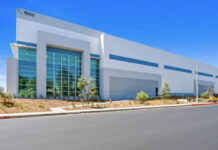Utah has consistently won “Best State for Business” rankings from Forbes, CNBC, 24/7 Wall Street and other thought leaders, but what is behind those accolades? The story of Utah’s business environment is one of predictability, consistency and long-term growth. Here are some factors to consider when you are locating or expanding an aerospace/defense or composites business.
- Tax Climate – Utah is no. 9 on a ranking from the Tax Foundation designed to show how well states structure their tax systems. The state’s corporate income tax rate of 5 percent puts it at no. 8 nationally on that individual metric.
- Hachman Index – This index quantifies the economic diversity of a state. The closer to 100, the more diverse (and therefore more resilient) the state’s economy. Utah scores 97.9 or no. 1 in the nation, edging out Georgia and North Carolina.
- Median Age – Utah has your workforce of today and tomorrow. At 30.7 years, Utah’s median age makes it the youngest state in the country. Utah strives to align education and industry. Programs like the Utah Aerospace Pathways train high school students so they can graduate with a certificate in aerospace manufacturing.
- Educated Workforce – And speaking of education, Utah ranks no. 14 in the nation in terms of the percentage of the population 25 years or older with a bachelor’s degree or higher. It is no. 12 when it comes to high school diplomas or higher. There are 11 higher education and technical institutions offering specialized programs in Aerospace and Composites. Utah State University has put more experiments into flight on shuttle and satellite missions than any other institution in the country. Additionally, USTAR—the state’s science, technology and research initiative—has opened an Innovation Center to support aerospace industry growth.
- Labor Costs – Labor costs are often the greatest expense to a business, and with Utah’s affordable yet highly educated and talented labor, it is the perfect place to find quality workers at a reasonable price. Utah ranks no. 5 among western states.
- Operation Costs – Utah has better than average operation costs ranking no. 2 most competitive among the western states. This rank includes real estate costs, electricity, natural gas, construction and other costs. For example, Utah ranks no. 13 in the country for both Industrial Construction dollars per square foot ($106.16/sf) and Commercial Construction ($144.78/sf).
- Abundant Workforce – Utah has high employee concentrations of aerospace engineers, materials scientists, machine operators and other aerospace related occupations. More than 40,000 employees work at 900-plus firms in Aerospace and Defense, and Composites-related fields.
- Worker’s Compensation – At no. 7, Utah’s average worker’s compensation premium ($1.31 per $100 of wages) is among the nation’s lowest.
- Transportation Infrastructure – The “Crossroads of the West” has considerable and convenient rail, highway and air infrastructure. In 2015, Salt Lake City International Airport (located a mere 10 minutes from downtown) offered 315 daily departures to 90 nonstop destinations, and finished fifth among mid-sized airports globally in on-time performance. When traveling on business, you spend less time in transit and on the tarmac, and more time on productive pursuits.
- Broadband Infrastructure – Utah is wired! The average connection speed (Mbps) statewide is 19.69, ranking it the fourth fastest in the country and no. 1 west of the Appalachians.
- Plentiful Testing and Training Resources – Utah is home to Hill Air Force Base (HAFB), Utah Testing & Training Range (UTTR), Utah Unmanned Aerial Systems Testing Center (UASUtah) and Rapid Integration and Testing Center. The UTTR is the largest overland contiguous block of supersonic authorized restricted airspace in the lower 48 states, and both HAFB and UTTR are located within 80 miles of Salt Lake City. UASUtah provides a testing and training ground for both public and private UAS operations, and is located 30 miles west of Brigham City. The Unmanned Aircraft Systems Project office operates its Rapid Integration and Acceptance Center (RIAC) at the U.S. Army’s Dugway Proving Ground, located 85 miles from Salt Lake City. The center is open to military agencies in need of testing UAS technologies.
- Look who has landed here – In Utah you’re in good company. Industry leaders with operations here include Boeing, Janicki, Albany, BAE, General Atomics, IMSAR, SyberJet, Orbital ATK, Northrop Grumman, Lockheed Martin, Kihomac, L-3 Communications and more.
Are these the only factors? Clearly not. That’s why the Economic Development Corporation of Utah has developed the “50 x 50” analysis of 50 business and economic metrics across all 50 states. Visit their web site and take a deep dive into regional and national factors, and contact them for your own copy of the 50 x 50 Research Brief.
On balance, Utah scores high in any objective—aggregated view of business friendliness, workforce quality, operational costs and more. If you’re looking to de-risk your business for the long haul, consider Utah as a stable and productive base for aerospace and composite manufacturing.

















![[VIDEO] Get More for Your Business in Ardmore. Oklahoma](https://businessfacilities.com/wp-content/uploads/2024/02/maxresdefault-324x160.jpg)
